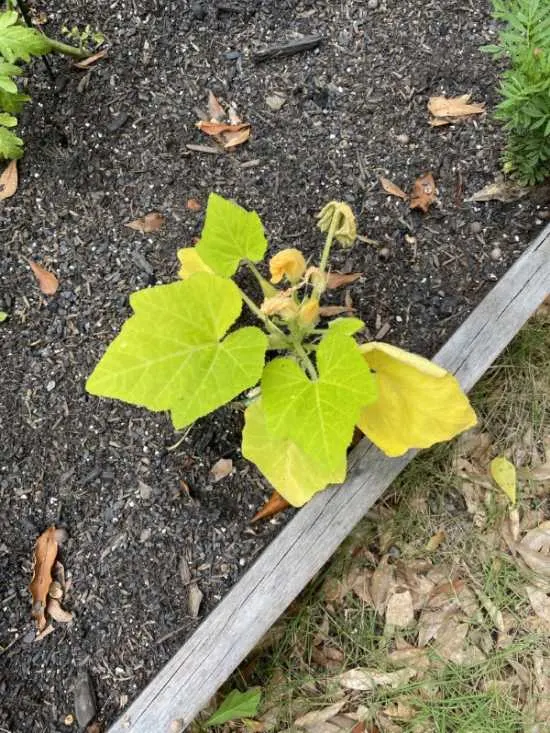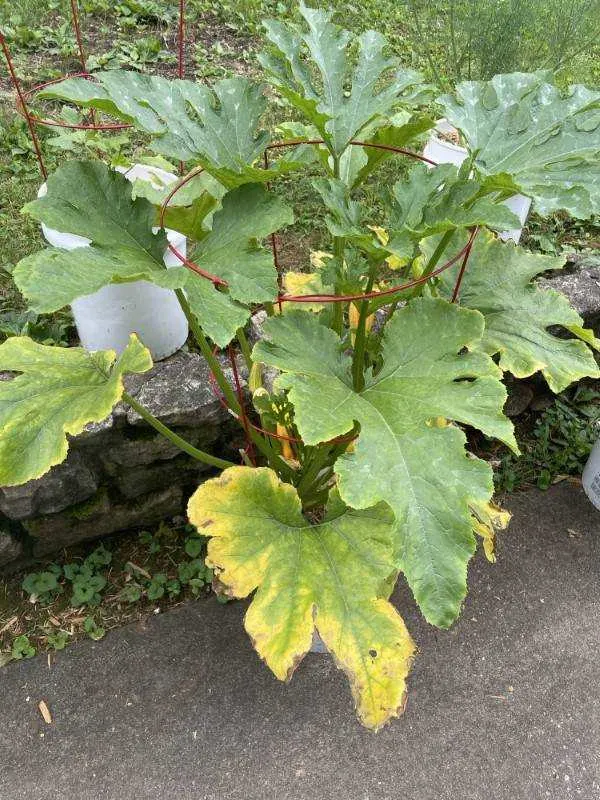Native to Central and North America, squash is known by other names like acorn, spaghetti, butternut, buttercups, banana, and zucchini squash.
Squash plants consist of orange or yellow flowers and white, green or yellow edible fruits of various sizes and shapes depending on the variety.
Also, these plants look like bushy plants made up of long vines and large lobed leaves that can cling and climb up the surface with the stems.
A notable comment on the prosperity of these species is the dark green color of the leaves. Alternatively, the signs of yellowing of the squash’s leaves are devastating.
The question is, why are my squash leaves turning yellow? This can lead to deficiency in nutrients or, even worse, make the plant die.

Why Are My Squash Leaves Turning Yellow?
They turn yellow because of the following reasons:
1. Poor growing
Squash will turn yellow because of poor drainage and low sunlight. It needs good drainage and enough sunlight to grow well and be green. This means that optimal growth will be achieved when sowed in fertile, well-drained soil with organic matter.
Spacing between the plants is also essential, as diseases and pests are more likely to spread if the plants are too close together. You can plant squash by placing or transplanting the seeds straight into the soil.
First, seeds should be planted 3-4 weeks before the last frost day. They should be planted in warm soil after the last frost for direct sowing. Squash plants grow well under continuous water.
However, if you live in areas where the water supply is unreliable, you can offer no less than one inch of water through watering deeply one time a week. This would be the ideal option.
2. A nutrient problem
Improper techniques of watering are not the only reason squash turns yellow. It could be due to an imbalance of nutrients.
Like every plant, squash requires certain nutrients to develop and produce ripe squash that we can eat. Squash needs a lot of potassium, phosphorus, and nitrogen. If the phosphorus level is low, you may add the bone meal.
Also, you can make your natural and organic NPK fertilizer by combining 10 oz of feather meal, 10 oz of bone meal, and 2 oz of potassium sulfate. Ensuring good and fertilized soil during planting and summer is critical for a healthy squash.
3. Squash bugs
Squash bugs are the most severe squash insects. They eat the stems and leaves by drinking the juice and piercing the surface. This will make this plant turn yellow.
You can control squash bugs by placing shingles and boards under the plants. Insects hide under these materials at nighttime, and you can easily collect and finish them every morning. You can kill larvae with insecticides that contain carbaryl.

4. Overwatering problem
Squash plants do well in faintly moist soil. The environment allows for the vegetative growth of this plant and the development of a lush green leaf.
Excess water in the planting area increases the danger of root rot, making the plant turn yellow. Fungal diseases prevent the squash root from undertaking its physiological functions.
Overwatered squash leaves change into yellow because of a lack of soil nutrients, water, and other important mineral irons.
I recommend letting the vase dry and revitalizing the squash leaves. As a rule, check the humidity level before watering your squash plants.
5. Mosaic viruses
Mosaic viruses spread exclusively because of aphids and cucumbers beetles. These pests become vectors by eating contaminated squash plants and then spreading through their mouths, turning the leaves yellow. The mosaic virus comes in two forms.
First, it is squash mosaic that cucumber beetle spreads, and then the second one is the zucchini yellow mosaic virus full of aphids.
In addition to turning squash leaves yellow, microorganisms become the cause of the stunted appearance of the fruit and plant and distorted size of the fruit.
It is almost impossible to prevent the mosaic virus once it is infected. Therefore, the key is to use insecticides suitable for the stated pests and destroy all infected plants.
6. Stress-related to water deficiency
Insufficient watering of the squash plant can cause the leaves to turn yellow. This plant needs up to two inches of water weekly.
The plant may need more water in the fruiting stage, particularly during the dry and hot seasons. Water the squash plants not often but extra deeply encourage deeper roots.
7. Bacterial wilt
Erwinia Tracheophyta, which is bacterial, is a cause why squash leaves turn yellow. The first sign that your plants might contain bacterial wilt is the leaves, which wilt during the day and recover from wilting at night.
The leaves wither, turn yellow and die. Sadly, this process continues and kills the whole plant.
Bacterial wilt spread through striped and spotted cucumber beetles. Some insects become infected with bacteria by eating contaminated plants—the bacteria hide away in the intestines of the beetles.
Also, the bacteria spread through the mouths of infected beetles and their droppings. Managing beetles is a simple, effective method to prevent bacterial wilt.
8. Attack by aphids
Aphids are the common pests that attack squash plants. Although they rarely cause significant damage, they can transmit viruses and leave behind residue that promotes fungal growth and the yellowish of the leaves.
The best method to control aphids is to encourage ladybugs, lacewings, and other insects to attack them. This means shunning the utilization of broad-spectrum insecticides as much as possible.
Whiteflies and spider mites feed on the squash plants, frequently hiding below the leaves. The insecticidal soap can kill aphids.
9. Squash vine borers stress
The flow of water and essential nutrients is interrupted by the piercing-sucking mouthpart of a squash vine borer. This will intern make the squash leaves turn yellow.
The effort should be to get rid of vine borers as possible. The original line of protection is to prevent the fully developed borer from laying eggs.
>> Related Post:
- What Does Bad Yellow Squash Look Like? (Storage Tips Included)
- Are All Squashes Edible? (Expert Advice & Caution)
Conclusion
Like all vegetables, Squash plants have special needs, and if they are not met, they can fall ill. Squash needs proper watering, sunlight, and nutrients to grow. If there is a problem, the squash leaves can turn yellow.
